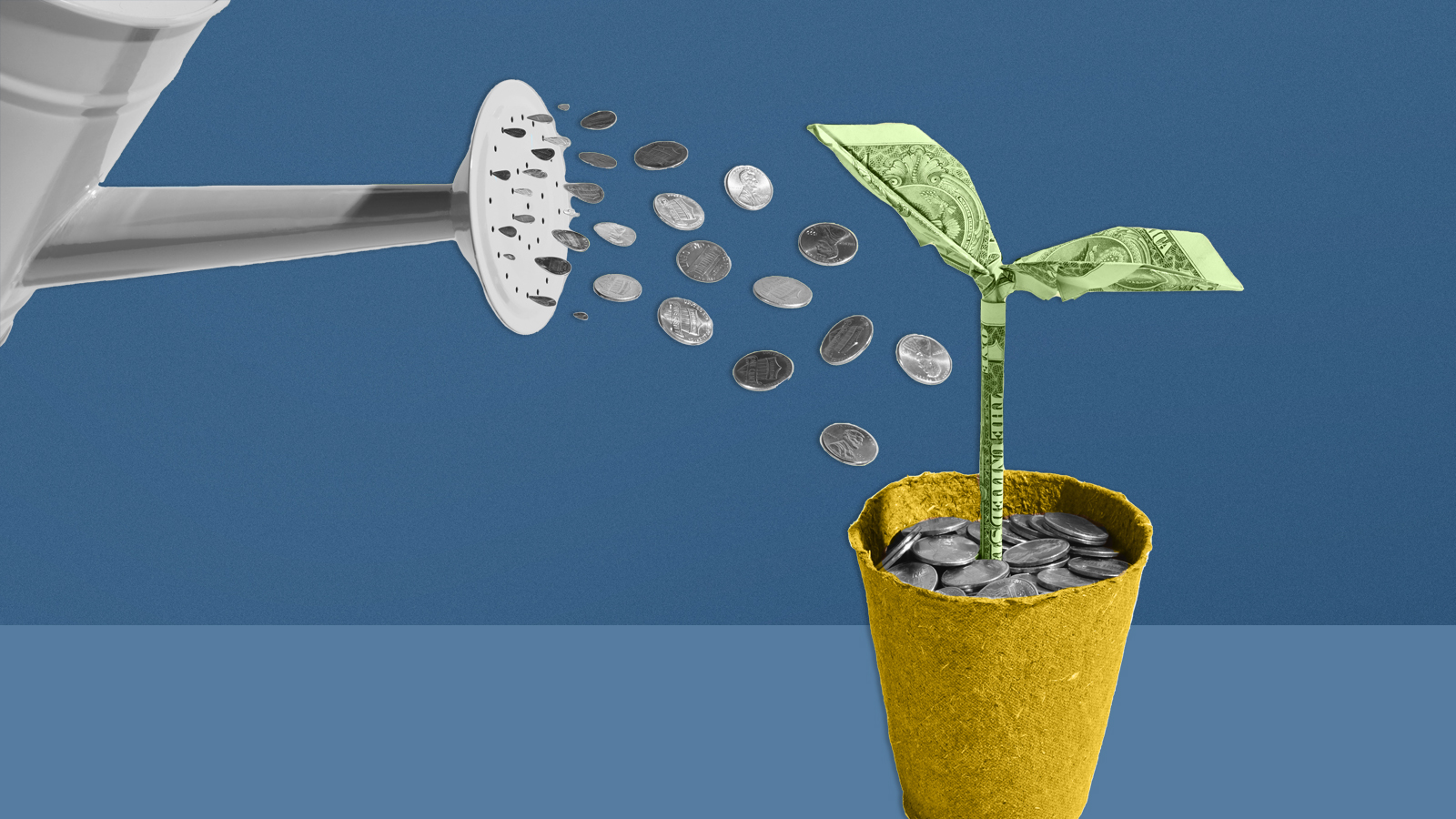Inflation is the rate increase in the average price of goods and services over a given period of time. It is frequently fueled by elements such as increasing demand, rising input costs, and expansionary monetary policies. The purchasing power of your savings can be diminished by inflation. Which means it will be challenging to pay for the same services or goods from the prior period. In this blog post, we’ll look at 11 powerful ways on how to fight inflation today and safeguard your financial security.
We have characterize these strategies in two buckets: 1) Budget Strategies On How To Fight Inflation, and 2) Investment Strategies On How To Fight Inflation. At the end, I will highlight 1 bonus tip to help on how to fight inflation.
Budget Strategies On How To Fight Inflation
1. Set and Track Your Budget:
The first step is to make sure you have your budget in check. Having a budget will allow you to identify areas where you can cut back and save money. The number of households that actually use a budget is surprising low. According to creditdonkey.com, only 32% of US households prepare a monthly budget. By setting a budget, you can ensure that you’re not overspending. Further, you can check that your funds will cover your expenses. If you don’t have a budget in place, create a spreadsheet or use popular apps such as Mint or Nerdwallet to set yourself up for success.
2. Eliminate Excessive Expenses:
The next logical step after creating your budget is to track your expenses. By keeping track of your spending, you can identify areas where you can cut back and save money. When you review, identify if you have duplicate expenses (multiple subscriptions, memberships, etc), or excessive expenses in one particular category (dinning, clothing etc.). If you do, plan to cut back on non-essential spending. How much you spend may surprise you. According to C+R Research, on average consumers underestimated their monthly spend on subscriptions by $133, 2.5x more than their original estimate.

3. Shop Smarter:
Another way on how to fight inflation is to become the Smart Shopper. This means looking for deals, using coupons, and buying in bulk. When you bulk buy, look at the price per unit. Those cost savings drop to the bottom line vs buying when needed. According to Sofi, while the amount shoppers save depends on the item, they can anticipate saving around 20% on [bulk buying] purchases, though it can be 50% or more. Items you may want to consider buying in bulk include shelf-stable foods like pasta, beans, canned food. Household products to bulk buy include paper towels, toilet paper, batters or office supplies. By shopping smarter, you can save money on essential items and reduce the impact of inflation on your budget.
4. Avoid Bad Debt:
Avoiding bad debt (debt used to buy items that do not generate cash flow) is another way to protect your budget from the effects of inflation. High levels of debt can make it more difficult to cover essential expenses, particularly when interest rates are high. In my prior blog on How to Create Long Term Wealth Successfully, I illustrated why so many people get themselves into debt. These include lack of financial education, easy access to credit, as well as others. By avoiding debt, you can reduce your overall expenses and protect your budget from the impact of inflation. If you do need to gain access to credit, make sure you are protecting your credit score (aim for 740+ FICO Score) so you can secure lower interest rates.

Investment Strategies On How To Fight Inflation
5. Invest in Real Assets:
Real assets are physical assets that have intrinsic value and can generate income or appreciate in value over time. Examples of real assets include real estate, precious metals, and commodities. Investing in real assets can provide a hedge against inflation because their value tends to rise with inflationary pressures. In particular, income producing real estate can be a good investment because it provides both rental income and capital appreciation over time. Furthermore, real estate can provide provide tax advantage depreciation and amortization.
6. Diversify Your Portfolio:
Diversification is a risk management method where you spread investments across a variety of asset classes and industries. By balancing the risk of inflationary assets, like bonds, with assets that are less sensitive to inflation, such equities or real estate, diversification can help decrease the impact of inflation.
7. Invest in Inflation-Protected Securities:
Inflation-protected securities are bonds that are intended to guard against inflation, which include Treasury Inflation-Protected Securities (TIPS). You can obtain TIPS directly through US Department of Treasury at treasurydirect.gov where TIPS are sold in 5, 10, or 30 year terms. Although the principal value of these securities is updated for inflation, the interest rate is fixed, protecting the return on investment from inflationary pressures. Since TIPS offer a guaranteed return that is indexed for inflation, they may safeguard your portfolio against inflation.
8. Invest in I-bonds:
Separately, investing in I-bonds through the US Department of Treasury are designed to provide a low-risk investment option for individual investors. The interest rate on I-bonds is composed of two components including a fixed rate (0.40%) and an inflation rate and adjust every 6-months. As of April 2023, the I-bond rate is 6.89%. However, there are limitations on how much you can purchase in a given year, including up to $10,000 in electronic I-bonds, and up to $5,000 in paper I-bonds with your tax refund. Below is a How To video from the US Department of Treasury on how to purchase savings bonds.
9. Short-term bonds:
Short-term bonds, such as Treasury bills (T-bills), have maturities of less than one year. These bonds have less exposure to inflationary pressures because they mature quickly and can be reinvested at higher interest rates if inflation remains high. We are currently witnessing in an inverted yield curve, where short-term rates are higher than long-term rates. You may be able to benefit from building a bond ladder. A strategy you can leverage is a 1-yr CD ladder with quarterly maturities (3mo, 6mo, 9mo and 12mo), which are currently yielding in the high 4%s to low 5%s and are typically FDIC insured.

10. Invest in Stocks:
Stocks reflect ownership in a firm and have the ability to increase in value over time. Thus, stocks are considered a useful inflation hedge. Prices for goods and services may rise as a result of inflation, which could impact business earnings. To counteract the effects of inflation, businesses may also be able to raise their pricing, which could result in larger profits for shareholders. You may also consider investing in preferred dividend stocks or utility stocks that may pay more predictable dividends. Also, consider alternating your portfolio slightly weighted to more stocks vs bonds, since existing bonds (bonds you already hold in your portfolio prior to inflation) tend to drop in price in an inflationary environment.
11. Cryptocurrencies:
Cryptocurrencies are decentralized digital assets that are unrelated to established financial institutions, like Bitcoin and Ethereum, and have become increasingly attractive as a hedge against inflation. Due to their finite supply, cryptocurrencies can help fend off inflationary pressures. I’ll admit that Cryptocurrencies are not my favorite investment vehicle. I prefer to invest in assets that generate cash flow like the ones I discuss in my passive income 101 blog post, and cryptocurrencies do tend to be more volatile with large price fluctuations. Some may argue that you can now stake your digital currencies for additional coin, which acts like a cash flow mechanism. However, you should caution on which staking platform you use. Do your research if the platform has enough liquidity in case you want to pull your coins out.

BONUS tip: Monitor Inflationary Indicators
Monitoring inflationary indicators can help you stay ahead of inflation and adjust your investments accordingly. Some common indicators of inflation include the Consumer Price Index (CPI), which comes out every month; and the Producer Price Index (PPI), another monthly release. Further, listen to what the US Federal Reserve says during its meeting minutes. By monitoring these indicators, you can get a sense of how inflation is impacting the economy and adjust your investments accordingly.
Increase your financial literacy to reach your financial goals
Overall, inflation is a persistent increase in the general price level of goods and services in an economy over time. Inflation can erode your purchasing power, reduce the value of your savings, and make it difficult for you to plan and operate effectively. You can proactively fight against inflation by monitoring your budget and strategically investing. It’s important to remember that no investment strategy is foolproof, and there is always a risk of loss. That said, increasing your financial literacy will take you one step forward to achieving your financial goals.
Live well,
Blue


















One response to “11 Powerful Ways On How To Fight Inflation Today”
🤓🤓🤓